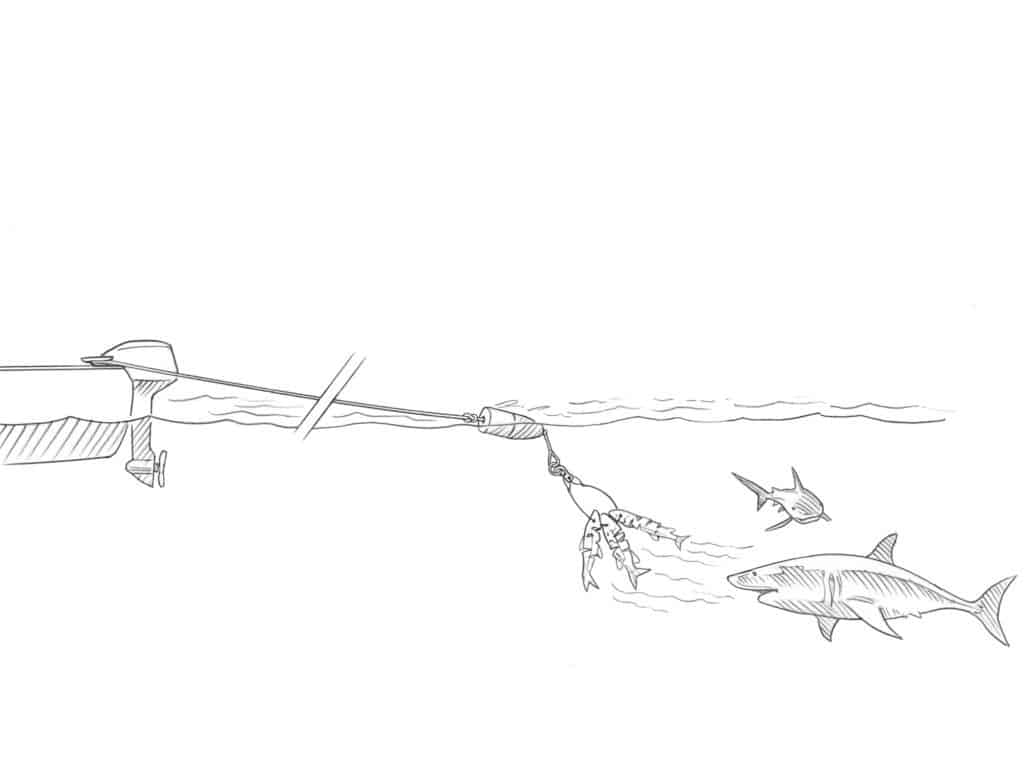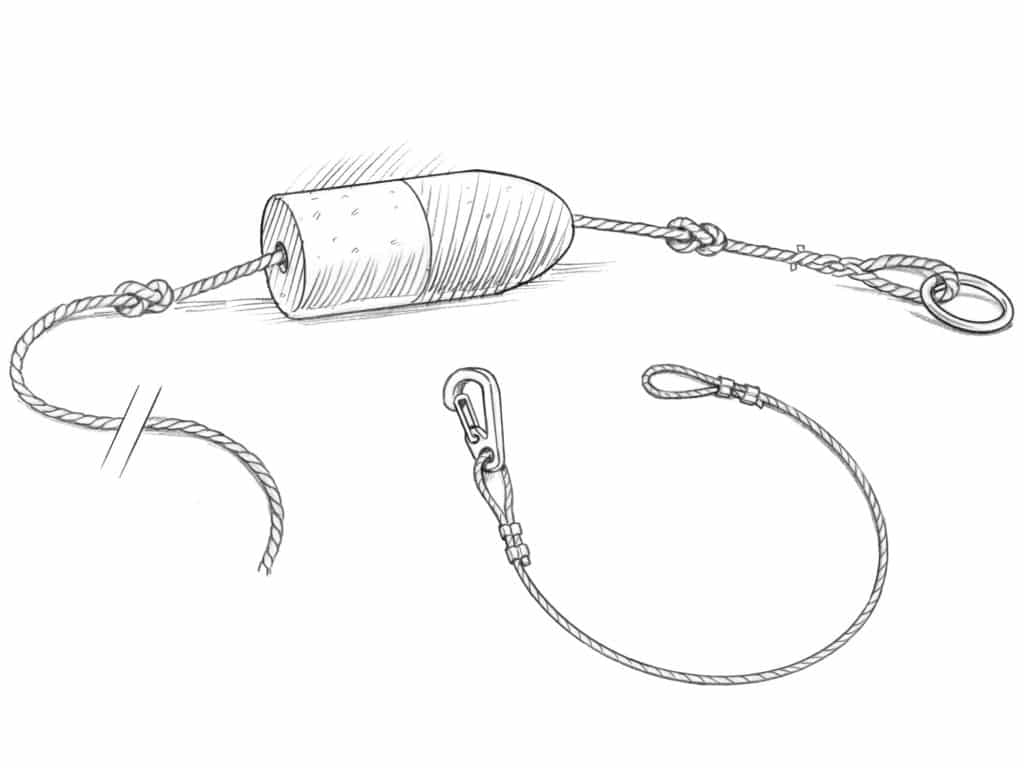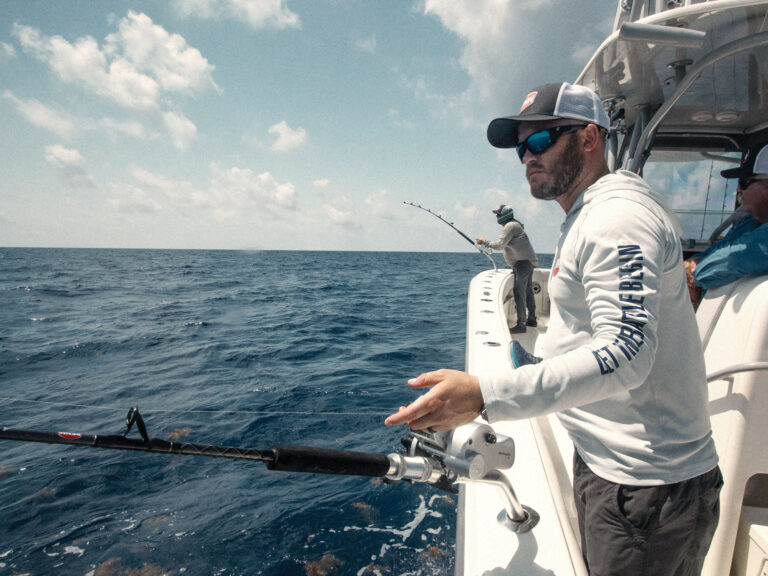
MATERIALS
3-inch welded stainless-steel ring
50-foot length of 3⁄8-inch nylon anchor line
Crab-trap float
Advertisement3-foot section of 1⁄8-inch stainless-steel rope (aka cable)
Zinc-plated copper duplex sleeves for 1/8-inch cable
Stainless snap
Advertisement

INSTRUCTIONS
1. Eye-splice a 3-inch welded stainless-steel ring to one end of a 50-foot length of 3⁄8-inch nylon anchor line. Thread the other end of the rope through a crab-trap float and slide the float to within 3 feet of the stainless ring.
2. Make a figure-eight knot a few inches above the float and another just below it to prevent the float from sliding up and down the rope.
3. Crimp a small loop on each end of a 3-foot section of 1⁄8-inch stainless-steel rope (aka cable) with zinc-plated copper duplex sleeves.
4. Attach a stainless snap to one of the cable loops. Once you’re anchored in a likely shark fishing spot, grab several bonito, barracuda or similar oily fish and insert the free end of the cable through the gills and out the mouths of the fish before running it through the stainless ring to the clip to complete the setup. Now tie the free end of the rope to a boat cleat.
5. Let the chum rig drift behind the boat, wait for sharks to show up, and slowly pull in 5 to 10 feet of rope every few minutes to bring them close enough so you can pick out and bait the shark you want.
Note: You can leave off the stainless cable with clip and tie a chum bag to the ring when targeting other species.









